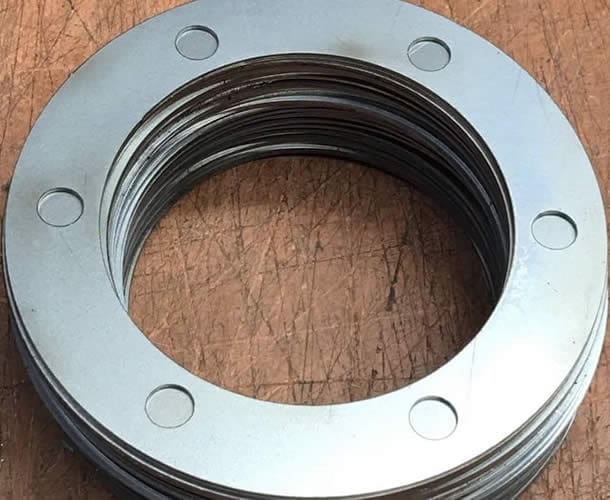The landscape of laser cutting has significantly evolved since 2012, driven by advancements in robotics, laser technology, and automation. This blog examines the current state and future trends of laser cutting as we look ahead to 2030. At Stephens Gaskets, we are at the forefront of this revolution, enhancing efficiency. Accuracy, and flexibility in our manufacturing processes. Key developments include the use of high-power lasers, the expansion of 3D printing, and the increasing application of robotics across diverse industries. Looking forward, the role of robotics and AI in manufacturing is set to grow. Further with collaborative robots working alongside humans, driving innovation, and reshoring manufacturing processes.
Robots and Laser Cutting: Revolutionising Manufacturing at Stephens Gaskets
In 2012, the manufacturing industry began its shift towards automation. With companies like FoxConn announcing plans to replace human-operated assembly lines with robots. Fast forward to 2024, and at Stephens Gaskets, we have integrated advanced robotics and laser technology to set the stage for a manufacturing revolution that will continue to evolve through 2030.
Historical Context: The Drive for Efficiency and Precision
The drive for manufacturing efficiency and precision has a long history, dating back to inventions like John Kay’s flying shuttle and James Hargreaves’ Spinning Jenny. These innovations sparked the Industrial Revolution, emphasising speed, accuracy, and productivity. All principles that remain central to today’s manufacturing advancements at Stephens Gaskets.
Optical Options: Advanced Laser Technology
Laser technology has become pivotal in modern manufacturing processes, including cutting, welding, and micromachining. At Stephens Gaskets, we use advanced lasers such as short-pulse and diode-pumped solid-state lasers. Which enable high precision and minimal heat effects. This is crucial for industries requiring fine features and uniformity, like electronics and medical devices.
Robotics and Automation: The New Frontier
The role of industrial robots has expanded beyond the automotive sector to areas like food production, healthcare, and electronics. At Stephens Gaskets, we are at the forefront of this trend, emphasising automation’s benefits. Improved product quality, reduced material costs, and enhanced energy efficiency. Our robots are integral to tasks such as laser cutting, where they offer unparalleled precision and reliability.
Emerging Technologies: 3D Printing and Beyond
Additive manufacturing, or 3D printing, continues to transform production lines by enabling rapid prototyping and short product runs with various materials. At Stephens Gaskets, we leverage 3D printing to enhance our manufacturing processes. Demonstrating the technology’s growing importance and versatility.
Looking Ahead to 2030: Future Trends
- Collaborative Robots (Cobots): By 2030, collaborative robots working alongside humans will become commonplace, enhancing flexibility and reducing the need for extensive safety barriers.
- AI and Machine Learning: These technologies will further refine robotic operations, enabling more complex and precise tasks, including adaptive learning and real-time decision-making.
- Sustainability and Energy Efficiency: Future advancements will focus on reducing the environmental impact of manufacturing. Energy-efficient robots and lasers will be essential in creating sustainable production processes.
- Reshoring and Localised Production: As automation reduces labor costs, there will be a trend towards reshoring manufacturing operations, bringing production closer to end markets and reducing supply chain dependencies.
Why Choose Stephens Gaskets?
At Stephens Gaskets, our commitment to innovation and quality sets us apart. Here’s why you should consider our laser cutting services:
- High Precision and Accuracy: Our advanced laser technology ensures that every cut is precise, meeting the strictest tolerances and quality standards.
- Speed and Efficiency: Automation allows us to complete projects faster and more efficiently, reducing turnaround times without compromising quality.
- Flexibility: Whether you need rapid prototyping, small batch production, or large-scale projects, we can tailor our services to meet your specific needs.
- Sustainability: Our processes are designed to minimise waste and energy consumption, making our services more environmentally friendly.
- Expert Consultation: We offer design and consultation services to help you optimise your projects for laser cutting, ensuring the best possible outcomes.
Common Questions from Potential Buyers
- What materials can you laser cut?
- We can laser cut a variety of materials, including stainless steel, aluminum, brass, copper, plastics, and more.
- How precise are your laser cuts?
- Our laser technology offers high precision, capable of handling intricate designs and tight tolerances to ensure top-quality results.
- Can you handle large-scale projects?
- Yes, we have the capability to handle large format laser cutting projects, providing efficient and cost-effective solutions for oversized components.
- Do you offer prototyping services?
- Absolutely, we specialise in rapid prototyping and small batch production, perfect for startups and designers looking to bring their ideas to life quickly.
- What are the benefits of using your laser cutting services?
- Our services offer high precision, reduced material waste, faster turnaround times, and expert support, making us a reliable partner for all your laser cutting needs.
Conclusion
As we move towards 2030, the evolution of laser cutting and robotics in manufacturing promises to create more efficient, precise, and sustainable production processes. At Stephens Gaskets, we are committed to staying at the forefront of these advancements, providing our clients with cutting-edge solutions that meet the highest standards of quality and innovation.
For further insights into the advancements and applications of laser cutting and robotics in manufacturing, explore our detailed case studies and technical resources or contact us to discuss how we can support your next project.

